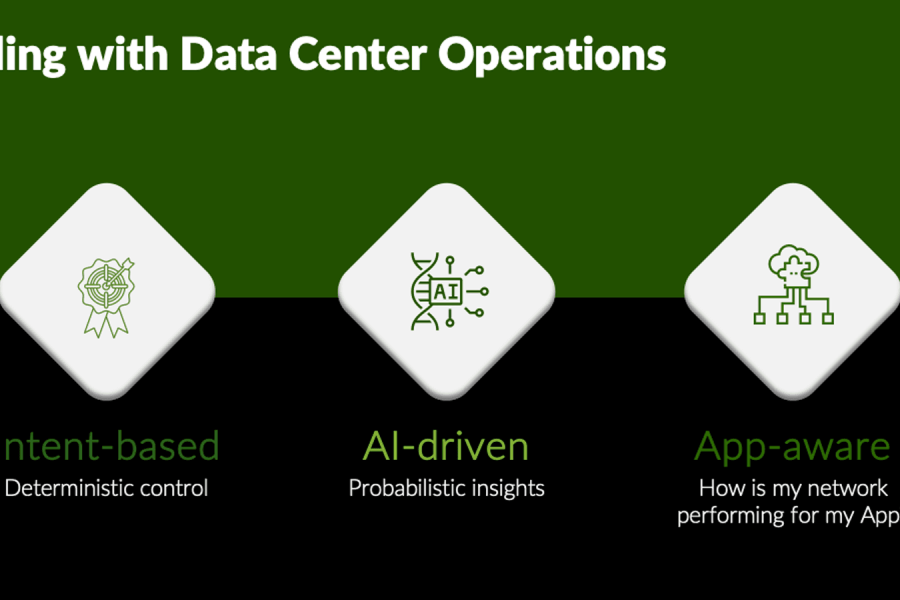Modern networks are all about the user experience they provide. How are end users interacting with the network – are there delays, lag time and dropped connections? Is it affecting productivity and effectiveness? These are important questions to consider.
Understanding the traffic that’s traversing a network and ensuring that traffic selects the strongest possible path is a hallmark of Juniper Networks’ Session Smart Routing solution. In order to build a smart network built around individual experiences, it’s important to understand the strength of specific network paths and have visibility into what types of traffic are entering and exiting the network. Without this information, there’s little chance of guaranteeing a positive user experience at all times.
But how can that information be captured?
Existing Methods are Inaccurate or Overuse Bandwidth
Traditionally, out-of-band Bidirectional Forwarding Detection, or BFD, is used. BFD is a mechanism where packets are sent at a specified, regular interval to detect failures in a network. When the routing device stops receiving a reply after a specified interval, it indicates a failure.
This process does work, but it’s not always accurate because it’s not constant, so it may miss brown-out periods; and because it’s only measuring one service class at a time, it will miss what may be happening on another service class. The answer to this for some is to use constant probes on the network path, which makes it more accurate, but also more bandwidth-intensive.
With the traditional approach, it either uses too much bandwidth, or there ends up being a different quality of service (QoS) for different service classes and networks, which creates confusion and hurts the user experience.
Juniper’s Inline Flow Performance Monitoring to the Rescue
Inline Flow Performance Monitoring solves these problems once and for all. It was designed to provide improved insights on the customer experience without creating excess overhead or wasting bandwidth. Inline Flow collects more granular insights, including details on jitter, loss and latency, enabling network managers to reduce total time to repair (TTR).
With Inline Flow, Juniper monitors sessions in real time, as they’re occurring on the network. Because different service classes have different variables and requirements, it’s impossible to measure the entire network experience from a single path and is a losing proposition. The measure will never be accurate. Instead, Juniper measures the network experience in-band with the sessions by adding metadata to the first packet. This generates more accurate measurements of how a service is performing and doesn’t use a significant amount of bandwidth.
The ability to do this without increasing bandwidth or overhead is a significant advancement, as network managers will no longer risk harming or slowing the traffic on their network just in order to gain visibility into the strength of the connection. By eliminating the need for BFD, it removes another potential variable slowing the traffic. Inline Flow is a truly accurate way of measuring the performance of network paths and, therefore, the user experience delivered on those paths.
The major benefit of real-time, accurate data, however, is being able to use that data to make adjustments and improvements when needed. In the traditional method, a lag or degraded path may never be caught. With Inline Flow it is discovered right away, enabling network managers to move the traffic to a better performing path and troubleshoot and repair the problem, often before users even realized that there was an issue.
Powering AI
This data and information is available directly to network managers so they can make these adjustments in real time. Additionally, it’s also used to feed the artificial intelligence (AI) technology that is at the core of Juniper’s Mist WAN Assurance solution. With the accurate insights and rich analytics that come from Inline Flow, Juniper provides its AI with the data needed to identify network issues and make recommendations on how to fix potential problems.
Finally – Accurate and Efficient Performance Monitoring
Juniper’s Inline Flow Performance Monitoring changes the game when it comes to visibility. By establishing a new way to measure network performance, without increasing overhead or bandwidth, network managers can finally acquire accurate, real-time data about their network, understand the paths their traffic is traveling on and know whether the experience is positive for end users.
The user experience matters. With this real-time accuracy, the success of a network can truly be measured in terms of the experience delivered.


